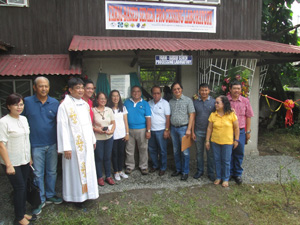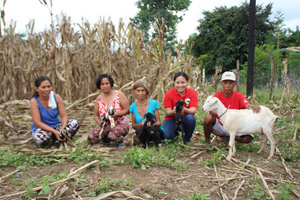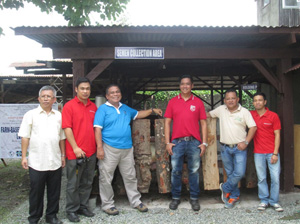 The low production of small ruminants like goat can be addressed by the use of foreign bloodlines of bucks, and purebred island born, but they can be quite expensive. Another production concern is inbreeding. This happens when the bucks that are available in the farms are related to the does’ offspring. Using these bucks for production can cause stunting in succeeding offspring.
The low production of small ruminants like goat can be addressed by the use of foreign bloodlines of bucks, and purebred island born, but they can be quite expensive. Another production concern is inbreeding. This happens when the bucks that are available in the farms are related to the does’ offspring. Using these bucks for production can cause stunting in succeeding offspring.
The Philippine Council for Agriculture, Aquatic and Natural Resources Research and Development of the Department of Science and Technology (DOST-PCAARRD), in partnership with Isabela State University (ISU) and Central Luzon State University (CLSU) addressed this concern by implementing community-based semen processing laboratories under the umbrella program of the National Dairy Goat S&T Program. Under this initiative, selected government and private-operated farms will be trained to process and distribute semen.
Dr. Ponciano Noel M. Soliman III, a veterinarian and currently president of the Federation of Goat and Sheep Producers and Associations of the Philippines Inc. (FGSPAPI), agreed to partner with the project implementers. He established a farm in Brgy. Tariji, Tarlac City for this purpose. This is the first laboratory for small ruminants in the country led by the private sector.
The farm-based semen processing laboratory will serve as source of semen from quality bucks. Semen collected from breeder animals will be maintained in the farm and will undergo a thorough evaluation for its motility, structure, and concentration. It will then be stored in nitrogen tanks and preserved for a period way beyond the life expectancy of its source. The semen will be readily available in straws and should be administered by technicians trained in the laboratory facility.
 Artificial insemination (AI) provides farmers several advantages. Farmers are not required to maintain a buck to breed. Instead they just pay for the service of AI technicians in the amount of P300-350 per insemination. Moreover, one ejaculation of a buck can generate as many as 15 doses placed in straws using a semen extender, SemEx. Lastly, the technology is affordable as farmers can buy semen in straws, compared with buying or maintaining an imported buck. This will help farmers to increase their income and ensure quality of their production.
Artificial insemination (AI) provides farmers several advantages. Farmers are not required to maintain a buck to breed. Instead they just pay for the service of AI technicians in the amount of P300-350 per insemination. Moreover, one ejaculation of a buck can generate as many as 15 doses placed in straws using a semen extender, SemEx. Lastly, the technology is affordable as farmers can buy semen in straws, compared with buying or maintaining an imported buck. This will help farmers to increase their income and ensure quality of their production.
During the inauguration of the laboratory, Dr. Edwin C. Villar, PCAARRD Deputy Executive Director for Research and Development, emphasized that the success of the laboratory would depend not only in the quality of semen but also on its correct and prompt delivery and administration.
Villar also mentioned the important role of livestock technicians from the local government units (LGUs) and the trained village-based AI technicians who will administer the artificial insemination. He also said that AI in goat should be mainstreamed in the regular extension services of the local government units.
The use of AI in goat production will help farmers to easily access quality genetic materials, increase the population of small ruminants due to multiple recipients of semen from a single quality buck, and decrease the cost of production for not maintaining a buck.


